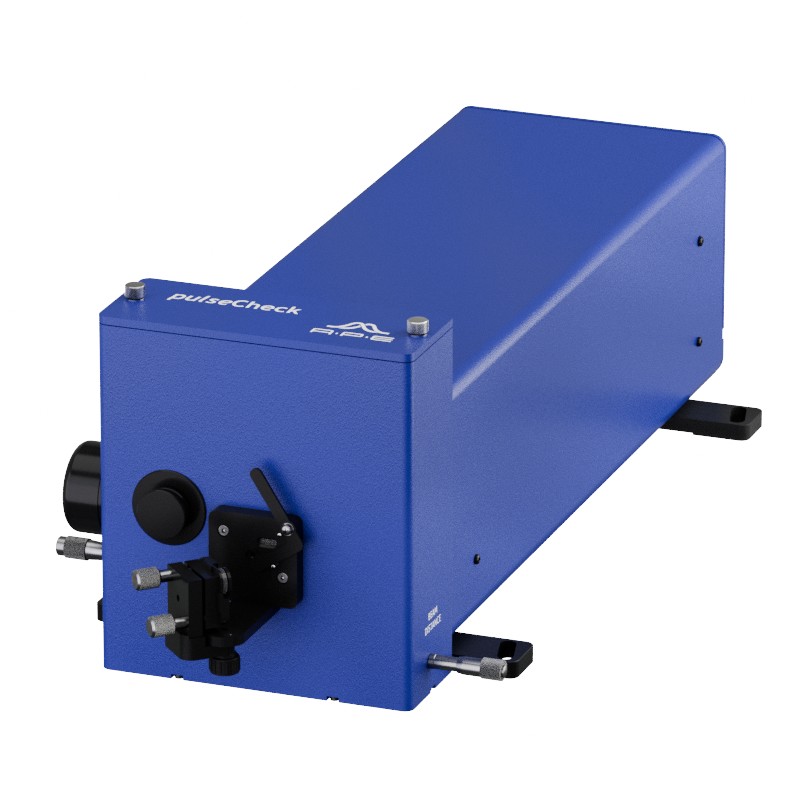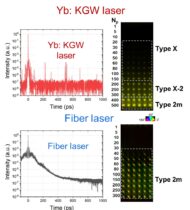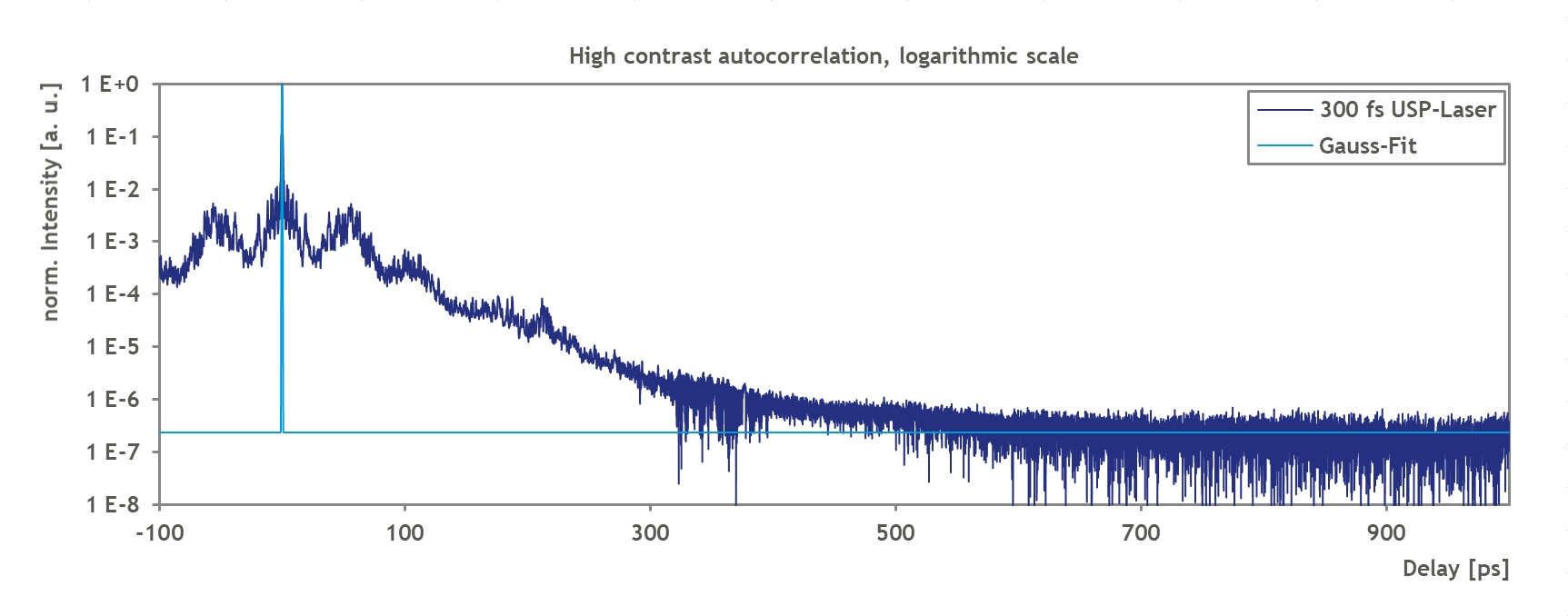pulseCheck SM Type 2
pulseCheck SM Type 2 High Contrast Reveals Temporal Information of Pre-/Post-pulses and Pedestals
Revealing Pre-pulses, Post-pulses, Pedestals, Satellites
High contrast measurements with the Autocorrelator pulseCheck SM Type 2 autocorrelator provide information about how far in time and intensity the main pulse is accompanied by pre-pulses, post-pulses and pedestals.
With a high dynamic range of 107, the pulseCheck SM Type 2 is ideally suited for the characterization of high-intensity, high-repetition rate laser pulses, such as the used in material processing or in ultra-high intensity light-matter interaction experiments.
At a Glance
- Measuring intense pulses and their pre-pulses, post-pulses, pedestals
- High dynamic range measurements of ultra-short laser pulses
- Temporal resolution for normal operation 1 fs and 25 fs for high contrast operation
- Ethernet, TCP/IP and USB connectivity for easy automation
- NIST traceable temporal calibration
Take a look at this recent paper by Peter G. Kazansky on “Controlling ultrafast laser writing in silica glass by pulse temporal contrast.”
High Contrast Measurement vs. Standard Autocorrelation Measurement
Figure: SM Type 2 high contrast autocorrelation measurement of an industrial femtosecond fiber laser with a nominal pulse duration of ~ 280 fs (please note the ps scale of the measurement). Measurement conditions: ~ 1030 nm, 35 mW, 1 MHz.
Specifications
At a Glance
| pulseCheck | SM Type 2 |
|---|---|
| Pulse width | <100 fs … 400 ps |
| Wavelength range | 700 nm … 1100 nm |
| Recommended repeptition rate | >10 Hz |
| Max. input power, pulse energy | 0.5 W for quasi-cw laser 5 µJ for kHz laser |
| Input beam polarization | Linear, any |
| Input beam coupling | Free-space with 6 mm aperture |
| Input beam height | 76 mm |
| Measurement refresh rate | 120 ps/sec depending on scan range |
| Delay resolution | 1 fs normal operation 25 fs high contrast operation |
| Contrast | Depending on laser repetition rate: 10-7 for >100 kHz, 10-6 for >10 Hz |
| Type of measurment mode | Non-collinear intensity and collinear interferometric - switchable |
| Available detector types | Photodiode (PD) with fixed wavelength range |
| Calibration | NIST traceable calibration certificate included |
| Trigger mode | TTL <100 kHz |
| Phase matching | Software-supported |
| Intensity resolution | 18 bit |
| Connectivity | Ethernet, USB, TCP/IP (SCPI command set) |
| Remote control | Programmable via API |
- Measuring intense pulses and their pre-pulses, post-pulses, pedestals
- High dynamic range measurements of ultra-short laser pulses
- Temporal resolution for normal operation 1 fs and 25 fs for high contrast operation
- Ethernet, TCP/IP and USB connectivity for easy automation
- NIST traceable temporal calibration
Datasheets & Brochures
APE pulseCheck SM Type 2 rev.4.2.1 (pdf / english)
or
Email & Phone Contacts
APE has distributors around the world to give you the best support. Choose a country to find your local sales contact:
Included
Acquisition Software and TCP/IP Standard Software Interface
All models come with an easy to use data acquisition software, allowing for real-time data display. Furthermore, the TCP/IP-based standard software interface by APE makes it straight forward to set up remote control. This allows you, for example, to design your own automated measurement routines. Simply use our protocol templates for rapid configuration with familiar programming languages, including C++, C#, LabVIEW, Python, Matlab, and Ruby.
NIST Traceable Calibration
Laboratories and manufacturers are often faced with systematically establishing an unbroken chain of calibrations to specified references. All APE autocorrelator models are calibrated to a traceable standard in accordance with NIST (U.S. National Institute of Standards and Technology) measurement traceability specifications. A printed and signed calibration certificate is provided with each pulseCheck.





